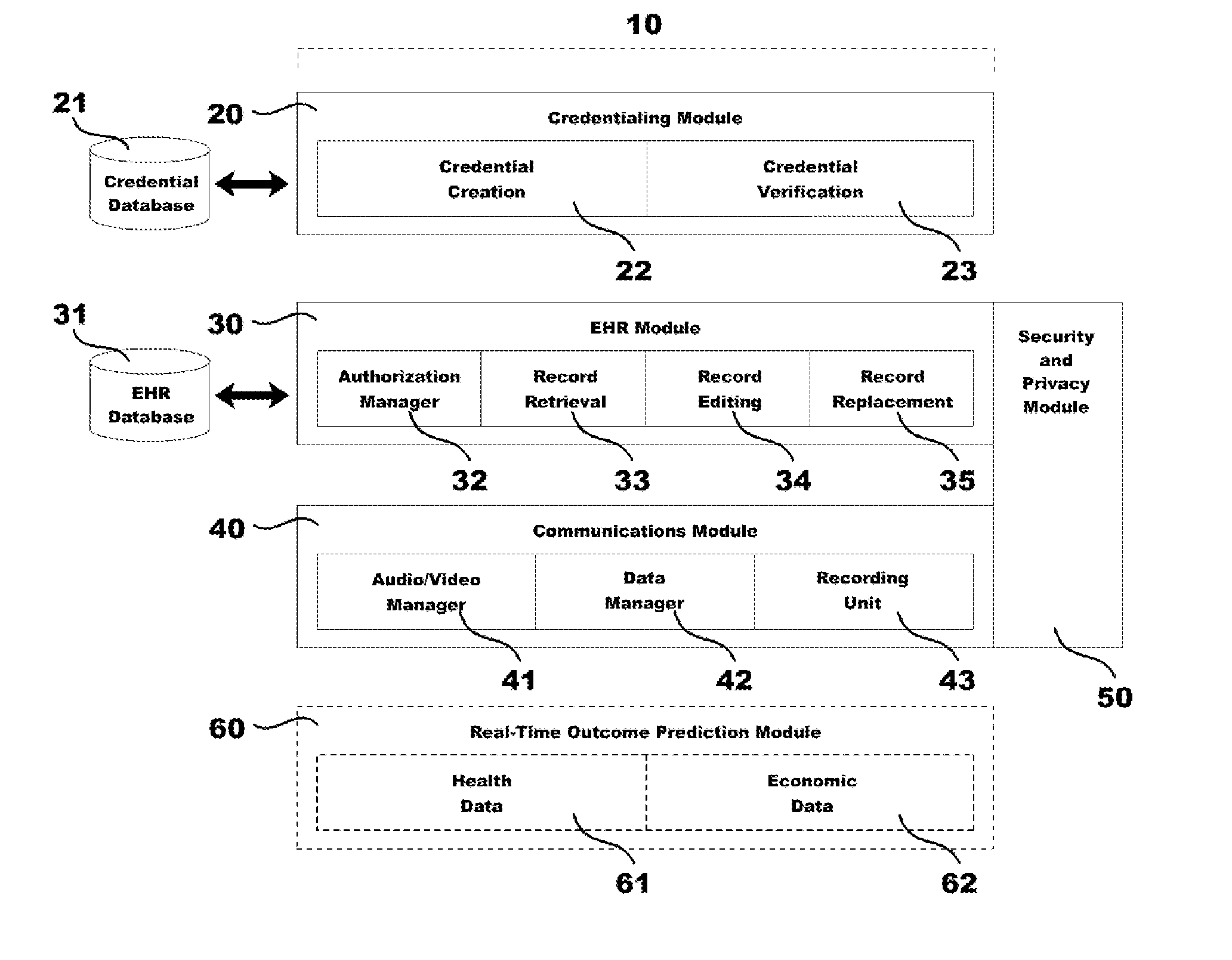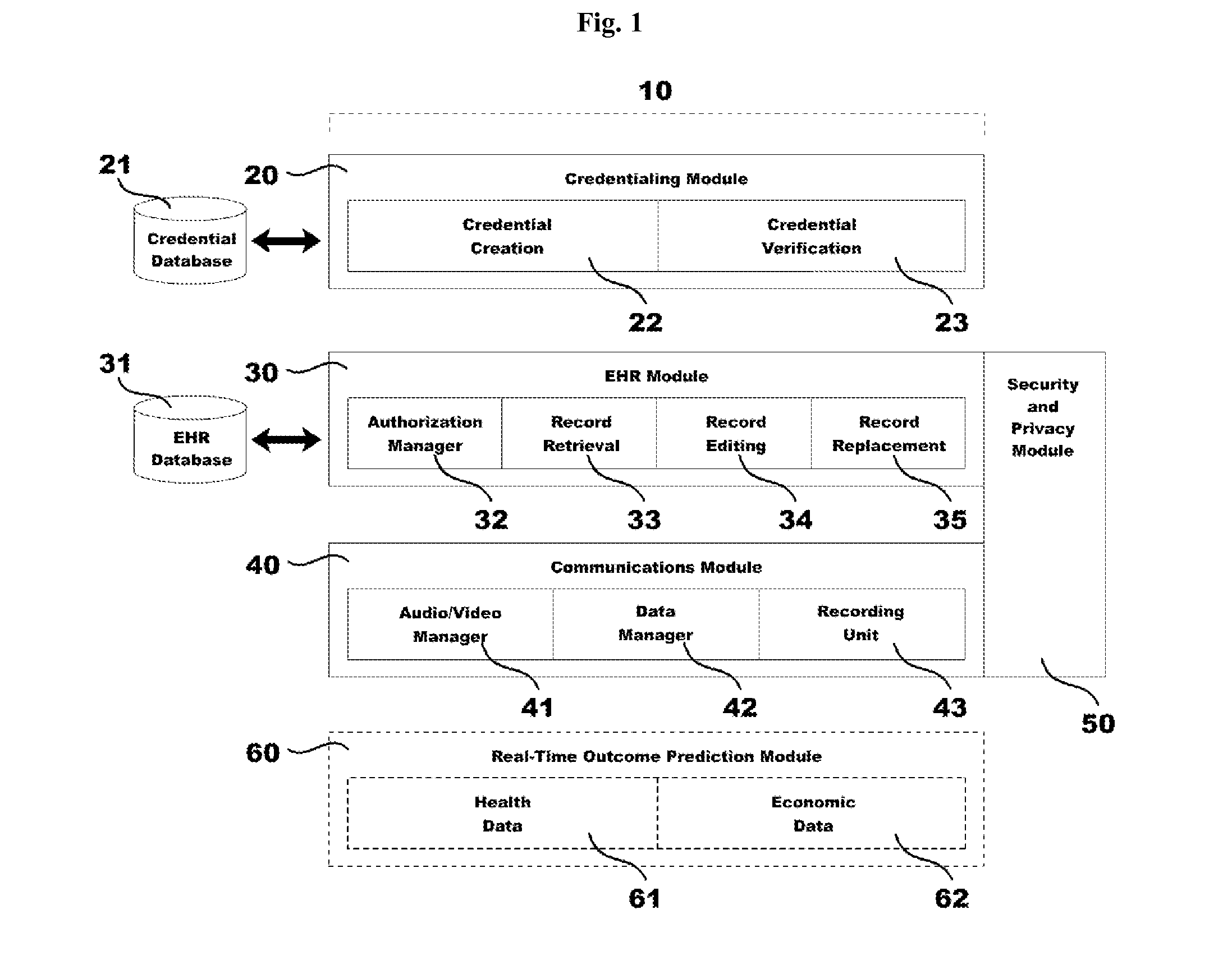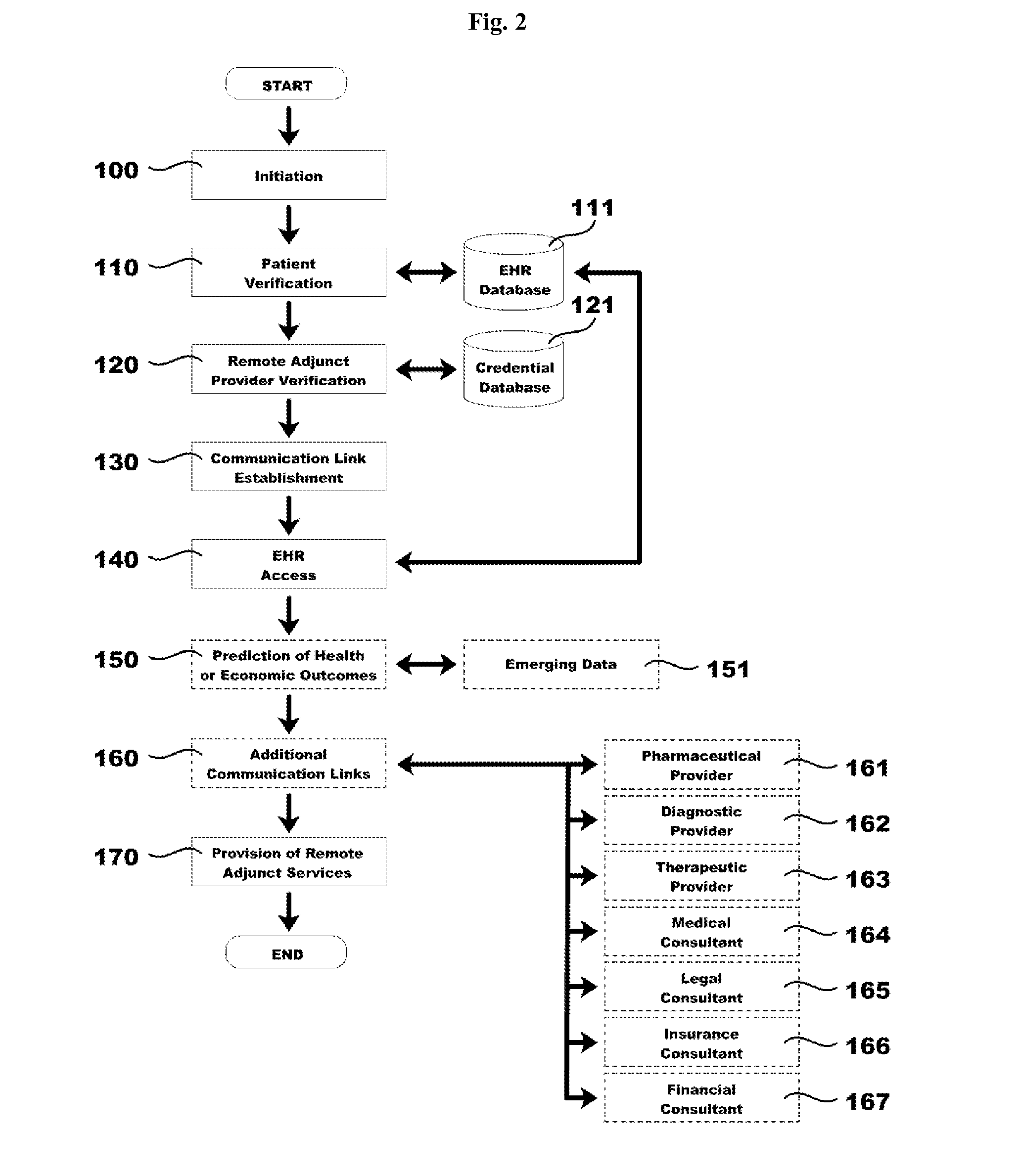Remote, Adjunct, Credentialed Provider-Directed Healthcare Systems and Methods
a provider-directed, remote technology, applied in the field of remote, adjunct, credentialed provider-directed healthcare systems and methods, can solve the problems of not being able to extend patient care effectiveness or not being able to provide long-term solutions for patient care effectiveness or high healthcare costs, and not being able to provide professional triage services. , to achieve the effect of reducing the cost of healthcare, enhancing the portability and accessibility of patients, and addressing the barriers to patien
- Summary
- Abstract
- Description
- Claims
- Application Information
AI Technical Summary
Benefits of technology
Problems solved by technology
Method used
Image
Examples
example 1
[0066]A 50-year-old, male patient experiences shortness of breath after a leisurely walk on a Saturday morning. He has experienced prior heart problems so he immediately calls his cardiologist. Unfortunately, his cardiologist does not regularly see patients on weekends. However, the cardiologist's group has partnered with a professional triage answering service to provide a professional answering service during non-working hours. During non-working hours, calls are directed to a nurse practitioner (NP) who can provide basic medical care. The cardiologist's group had previously verified the NP's credentials by interviewing the NP and checking her medical malpractice insurance coverage, professional references, legal and prescription licenses, and state of licensure. The NP answers the patient's call and notes the symptoms. Using a software program, the NP accesses the group's electronic health records including the patient's previous medical history.
[0067]The NP supplements her profe...
example 2
[0069]A 25-year-old female researcher in Antarctica is experiencing coughing and fever. The nearest medical facility is at least few hundred miles away. The research station is only equipped to provide basic first aid care and medication. However, the station is partnered with a live, remote, adjunct triage system and equipped with a biometric sensor and a portable, electronic imaging device. The researcher suspects that she has contracted pneumonia, which usually requires immediate treatment, but she is not sure. Using a video conference system, the researcher connects to a live, remote, adjunct provider. The provider, a physician assistant (PA) located in California, is credentialed by the researcher's healthcare provider who verified the PA's education, training, certifications, references, prescription license, malpractice insurance coverage, and state license and state of licensure. The PA asks basic questions about the researcher's symptoms and examines the researcher visually...
example 3
[0072]In order to extend its patient care effectiveness, a large metropolitan hospital has recently decreased its overnight medical staff to a minimum level and instituted a live, remote, adjunct triage service system to evaluate any overnight, in-patient care issues. A 33-year-old male is an in-patient of the hospital. Shortly after 2 a.m., he starts experiencing sharp pain in his abdomen. An attendant on duty initiates the remote adjunct triage system by identifying the patient and describing the symptoms briefly into a laptop computer at the patient's bedside. The system analyzes the data and opens a video link with a live, remote, adjunct physician assistant (PA) in Australia. The PA was previously credentialed by the hospital which verified the PA's education, training, certifications, references, prescription license, malpractice insurance coverage, and state license and state of licensure.
[0073]The PA obtains the patient's consent to access his electronic health records. Usin...
PUM
 Login to View More
Login to View More Abstract
Description
Claims
Application Information
 Login to View More
Login to View More - R&D
- Intellectual Property
- Life Sciences
- Materials
- Tech Scout
- Unparalleled Data Quality
- Higher Quality Content
- 60% Fewer Hallucinations
Browse by: Latest US Patents, China's latest patents, Technical Efficacy Thesaurus, Application Domain, Technology Topic, Popular Technical Reports.
© 2025 PatSnap. All rights reserved.Legal|Privacy policy|Modern Slavery Act Transparency Statement|Sitemap|About US| Contact US: help@patsnap.com



